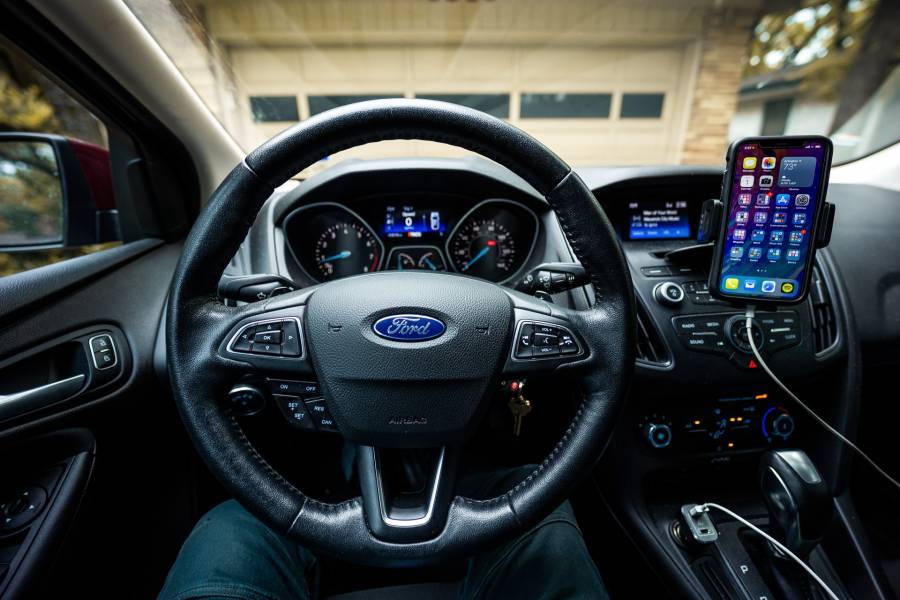Quick Navigation
Long hours of driving, a long hour of work, or sleepless nights can lead to drowsy driving.
It’s not a mystery that tired, sleepy, and intoxicated drivers display increased reaction times.
It results in many accidents during the night and early morning when drivers are less alert.

The driver alert warning systems offer a way to reduce the likelihood that a drowsy driver will lead to an accident.
Although, a study has found that adequate sleep and proper education about the dangers of drowsy driving is the best solution.
“Driver Alert Warning Rest Suggested” – How Does It Work?
It is usual for humans to reach the fatigue limit due to usual activities, but caution is inevitable.
Driver alert systems specifically aim to detect signs of driver drowsiness.
If the system detects that the driver is having trouble staying awake, it continuously alerts till proper caution is taken.
The Driver Alert Warning system does not act only when a vehicle is in danger of drifting out of its lane.
It also scans for the erratic movement usually associated with a faulty driver.
The most common configuration of a Driver Alert Warning system uses a front-facing camera.
It is mounted on the dashboard in the instrument cluster to track left and right lane markings.
Some of these systems may also function if only one lane marking is visible.
The Driver Warning system can detect signs of fatigued driving by monitoring lane markings or checking other inputs.
Some driver alert systems use sophisticated algorithms to distinguish between regular movements and the type of jerky or drifting steering.
These movements are typically associated with a tired driver. Other systems have sensitivity controls that the driver can adjust, and most can be switched manually.
Advanced Features In A Driver Alert Warning System
In addition to monitoring vehicle movement, some driver alert systems can also monitor the driver.
They check for drooping eyelids, weakened facial muscles, or other signs of drowsiness.
With GPS, some advanced warning system features can inform you of the nearest resort centers to take a break.
In other cases, your seat may vibrate continuously to keep you alerted against drowsy driving.
The system can also notify of high speeds above 40 mph. It warns you to regulate your speed to the normal driving speed to succor against possible damages.
Warning Stages
The Driver Alert Warning is in two stages:
Driver Alert Warning Rest Suggested
“Driver Alert Warning Rest Suggested” alerts that you rest as soon as it is safe.
Many things can happen when the driver alert warning system detects driver fatigue or drowsiness.
Some of these systems provide a tiered method that increases severity over time. It can be likened to intervals in smart alarms, from low to high alert.
The Driver Alert Warning Rest Suggested is the first alert issued after detection of unusual driving.
It typically starts with a simple, first-level chime and a coffee cup icon display in the instrument cluster.
This display suggests that the driver take a break and flash a light on the dashboard. A message “Rest Suggested” will be displayed.
If the driver stops spinning at this point, the system will typically turn off the light and automatically restart.
However, the Driver Alert Warning system won’t alert you if the vehicle speed is below 40 mph (65 km/h).
Driver Alert Warning Rest Now
“Driver Alert Warning Rest Now” alerts that you must take a break at that instance due to low alertness.
If the driver doesn’t stop after the first alert has been issued, the alert intensifies.
When the system finds driving reckless, the driver alert system message on display changes to Rest Now.
It may sound louder and more persistent to ensure that the driver heeds and takes a break. Some driver alert systems eventually transition to alarm.

Moreover, the system can only issue an alert warning, and it can’t stop the driver from driving or restore the car to the regular lane.
The driver is expected to obey and take proper actions.
Once the driver stops and either opens the door or turns off the engine, all information is reset, and the warning tone seizes.
Activating, De-Activating, And Resetting Driver Alert Warning
This process is as simple as turning on and off your car’s air-conditioning. To do this, follow the steps listed below:
- Select the “Driver Assist” control on the information display on your steering wheel.
- Activate or de-activate the alert by choosing the ON or OFF option.
Resetting The Driver Alert Warning – Rest Suggested
- Switch off and on the ignition when your vehicle is stationary.
- Open and close the driver’s door when your vehicle is stationary.
Common Causes Of Drivers’ Drowsiness
Drowsiness is the primary action trigger of any Driver Warning Alert System in vehicles.
The system can differentiate between your everyday driving and drowsy driving, so it can quickly alert you to adjust.
Below are some of the causal factors of drowsiness and solutions to keeping safe while driving.
Sleepless Nights
One can experience sleepless nights due to a lack of proper planning to take a rest among busy schedules.
When a driver experiences sleepless times, he can doze off while driving.
Work-life must be balanced, and shifts should be regular enough to protect posterity from avoiding this.
Intoxication
Getting intoxicated can lead to a day’s short sleep. It possibly can wreck one when driving, especially on a busy road.
Therefore, hard drugs or drinks must be avoided when you need to drive. You must not drink while driving or drive while drinking.
Exhausting Medicines
Some prescribed drugs tend to make one falls asleep while driving. These drugs are taken either to assist sleep or for health restoration.
However, it can also have some side effects that affect man’s day-to-day activities.
Taking medicinal drugs is only encouraged when you have enough time to rest during the day if your night rest isn’t sound.
Sleep Disorders
For instance, if not appropriately treated, Apnea interrupts a driver from sleeping well. Therefore, drowsiness can happen when driving.
Sleep disorders must not be left untreated due to the havoc they can wreak on human health and the environment.
Daily, early and continuous care is required to conquer sleep problems.
Final Words
In conclusion, the losses through drowsy driving and not heeding when the alert warning is on are alarming.
Therefore, caution must be taken to heed the warning and take time to rest when you are feeling dizzy when driving.
It is vital to protect yourself, your properties, and the community. Staying awake on a long journey while drowsy to either close a deal or get to work on time.
In this case, a rest of a few hours’ intervals is paramount to land and return safely. Therefore, safety is everyone’s daily duty.

Patrick started his love affair with cars in his childhood. Over the years, he claims a sturdy hold on his driving skills, along with a thorough understanding of cars. We can expect some interesting, holistic, and pleasurable blogs with his flair for writing and his love for cars.
Being a car enthusiast, Patrick has experience comprising of two decades in which he has ridden some of the meanest and strongest machines in the automotive industry. His previous avatars include an automotive professional, photographer, and journalist, and you will certainly experience the roundness of experience in his piece on this site.
In his second decade of reviewing cars and analyzing tools, Patrick is all set to give you convincing, reliable, and the latest information regarding what’s happening in the automotive industry. Currently, he owns a BMW Z3 but cannot get his eyes off Aston Martin DB5. He is a car enthusiast; he loves cooking and listening to music, especially jazz. Here are some of the pieces written by our ace author.






